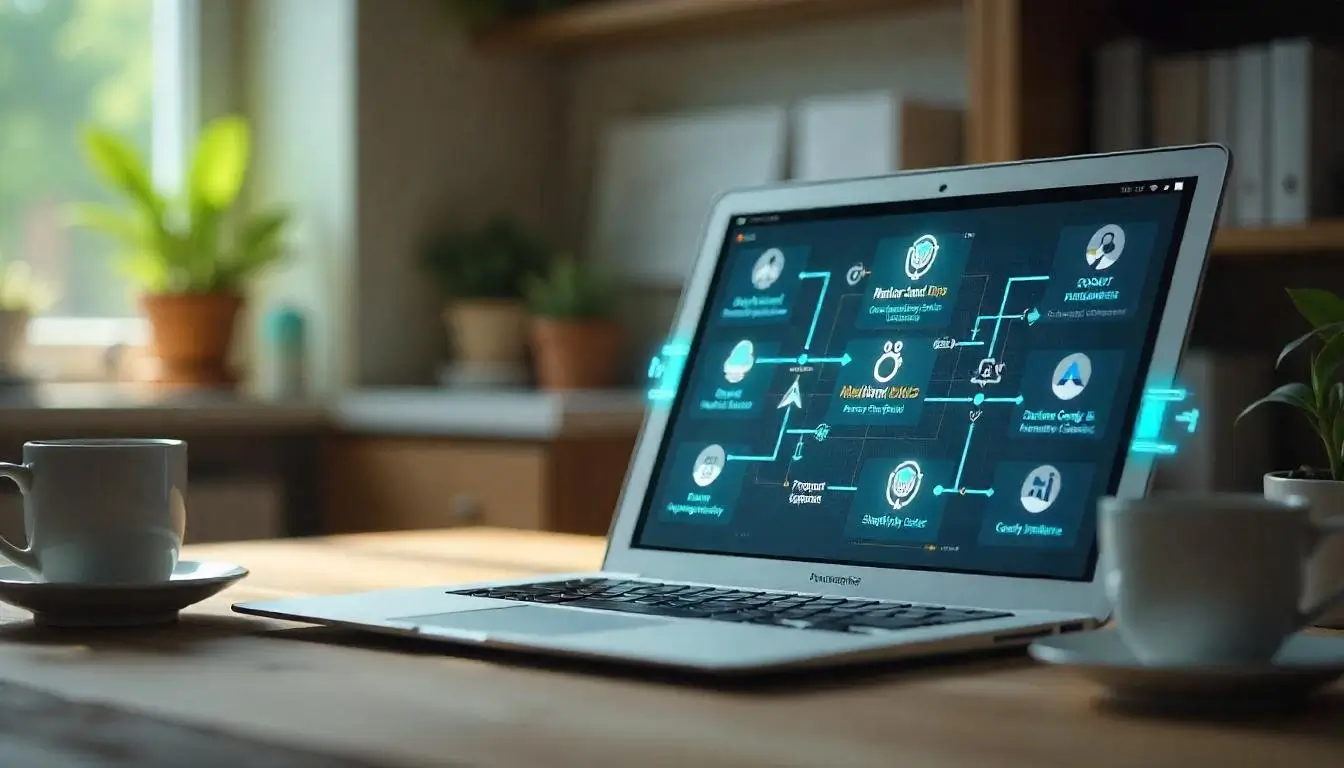Managing an ecommerce website can be challenging, especially when it comes to updating product feeds or keeping inventory data in sync. Manual updates are prone to errors and consume valuable time, but leveraging GitHub workflows can automate these tasks, ensuring accuracy and efficiency.
This blog will guide you through automating tasks like product feed updates and inventory management using GitHub workflows. We’ll also explore real-world examples of connecting GitHub with third-party tools for seamless product data synchronization. By the end, you’ll understand how to simplify your workflow and boost your productivity.
What Are GitHub Workflows?
GitHub workflows are a feature of GitHub Actions that allow you to automate repetitive tasks in your repository. They consist of customizable scripts that trigger specific actions based on defined events, such as pushing code or creating pull requests.
For an ecommerce website, workflows can:
- Automate product catalog updates.
- Sync inventory data between repositories and third-party tools.
- Validate changes to product data using automated tests.
By incorporating GitHub workflows, you can streamline operations and focus more on growing your business.
Benefits of Automating E-commerce Product Updates with GitHub Workflows
Using GitHub workflows for your ecommerce website offers multiple benefits:
- Efficiency: Automating repetitive tasks reduces manual effort and saves time.
- Accuracy: Automation minimizes errors in product feeds and inventory management.
- Scalability: Easily manage updates for large product catalogs.
- Collaboration: Enable seamless contributions from team members and freelancers.
- Integration: Connect with third-party services like Google Merchant Center, Shopify, or AWS.
Setting Up GitHub Workflows for E-commerce
1. Create a GitHub Repository
If you haven’t already, start by creating a repository for your ecommerce project:
- Go to GitHub.com and create a new repository.
- Name the repository (e.g.,
ecommerce-product-updates). - Add a description and initialize it with a README file.
- Create a
.github/workflowsdirectory in your repository to store workflow files.
2. Understand Workflow Components
GitHub workflows are defined in YAML files. A basic workflow includes:
- Trigger Events: Define when the workflow should run (e.g.,
push,schedule). - Jobs: Specify tasks to execute.
- Steps: List actions or commands for each job.
Here’s an example of a simple workflow:
name: Update Product Data
on:
push:
branches:
- main
jobs:
update-product-feed:
runs-on: ubuntu-latest
steps:
- name: Checkout Code
uses: actions/checkout@v3
- name: Run Update Script
run: python scripts/update_product_feed.py
3. Automate Product Feed Updates

Example: Updating Google Merchant Center Feed
To automate updates to your Google Merchant Center product feed:
- Create a script (
scripts/update_google_feed.py) that generates the product feed in the required format (e.g., CSV or XML). - Use a workflow to execute the script and upload the file:
name: Update Google Feed
on:
schedule:
- cron: '0 2 * * *' # Run daily at 2 AM
jobs:
update-google-feed:
runs-on: ubuntu-latest
steps:
- name: Checkout Code
uses: actions/checkout@v3
- name: Install Dependencies
run: pip install -r requirements.txt
- name: Generate Product Feed
run: python scripts/update_google_feed.py
- name: Upload to Google Cloud Storage
uses: google-github-actions/upload-cloud-storage@v1
with:
path: output/google_feed.xml
bucket: your-bucket-name
This workflow ensures your product feed is always up to date in Google Merchant Center.
Inventory Management with GitHub Workflows
Example: Synchronizing Inventory with a Third-Party API
Many ecommerce platforms offer APIs for inventory management. Here’s how to sync inventory data using GitHub workflows:
- Write a script (
scripts/sync_inventory.py) to fetch inventory data from your API and update your repository. - Create a workflow to run the script:
name: Sync Inventory
on:
workflow_dispatch:
jobs:
sync-inventory:
runs-on: ubuntu-latest
steps:
- name: Checkout Code
uses: actions/checkout@v3
- name: Set Up Python
uses: actions/setup-python@v4
with:
python-version: '3.x'
- name: Install Dependencies
run: pip install -r requirements.txt
- name: Sync Inventory
run: python scripts/sync_inventory.py
This workflow can be triggered manually (workflow_dispatch) or scheduled to run periodically.
Connecting GitHub with Third-Party Tools

1. Zapier for Automation
Zapier connects GitHub with over 3,000 apps, enabling workflows like:
- Notifying your team on Slack when a product feed update is complete.
- Triggering an email to stakeholders when inventory data changes.
2. Google Cloud Storage
Use Google Cloud Storage to host and update product feeds for services like Google Merchant Center. GitHub workflows can automate the upload process.
3. Shopify API Integration
Sync your GitHub repository with Shopify’s API to:
- Update product listings automatically.
- Manage inventory changes in real time.
Example script to update Shopify:
import requests
API_KEY = "your-shopify-api-key"
PASSWORD = "your-shopify-password"
SHOP_NAME = "your-shop.myshopify.com"
url = f"https://{API_KEY}:{PASSWORD}@{SHOP_NAME}/admin/api/2023-01/products.json"
# Sample payload to update a product
payload = {
"product": {
"id": 123456789,
"title": "Updated Product Title"
}
}
response = requests.put(url, json=payload)
if response.status_code == 200:
print("Product updated successfully.")
else:
print("Failed to update product.", response.text)
Trigger this script via a GitHub workflow to automate Shopify updates.
Best Practices for GitHub Workflows in E-commerce
- Version Control: Store all scripts and configurations in your repository to track changes.
- Secure Secrets: Use GitHub Secrets to store API keys and sensitive credentials securely.
- Test Locally: Test scripts locally before adding them to workflows to avoid unexpected failures.
- Monitor Workflows: Use the GitHub Actions dashboard to monitor workflow runs and troubleshoot errors.
- Optimize Performance: Schedule workflows during off-peak hours to reduce server load.
Conclusion
Automating product updates and inventory management with GitHub workflows can transform how you manage your ecommerce website. By reducing manual tasks, ensuring data accuracy, and integrating with third-party tools, you can streamline operations and focus on scaling your business.
Start small by setting up basic workflows, then gradually expand to more complex automations. With GitHub, the possibilities for optimizing your ecommerce processes are endless.
Have questions or tips for improving workflows? Share them in the comments below!
- Start Earning: How to Make Money on Taobao Without Big Investment
- Can You Use PayPal on Taobao? Here’s What You Need to Know (2025 Update)
- AI vs. Manual Ecommerce Management: What’s More Effective in 2025?
- Shopify 1099-K Reporting Rules Are Changing: How It Affects Your Online Store
- AliExpress vs Amazon: Which Is Better for Budget Shoppers?
- Is AliExpress Safe in 2025? What Buyers Need to Know Today
- Why Is Pandabuy So Popular? A Deep Dive into Its Rise on Social Media
- How Safe Is Pandabuy? What Every New Shopper Should Know
- How to Use Pandabuy in 2025: Step-by-Step for First-Time Buyers
- Taobao Shipping Explained: Delivery Times & Costs in 2025
- Taobao Payment Not Working Internationally? Here’s Why
- Shopify Experts vs DIY: What’s Best for Your Business?
- Top Dropshipping Businesses to Start in 2025
- How to Use Taobao in English: A Step-by-Step Guide
- Taobao Login Issues & Link Sharing Problems: How to Fix Them
- Is Taobao Safe? What You Need to Know Before Buying
- Shogun Shopify: The Best Page Builder for Your Store
- Magento Marketplace vs Shopify: Which Platform is Best for Sellers?
- How to Hire a WooCommerce Expert: Skills, Costs, and Best Platforms
- Ecommerce Fulfillment Services: How to Choose the Best Solution for Your Business
- Ecommerce explicado: Tipos, beneficios y claves del éxito
- Ecommerce: ¿Qué es y cómo empezar tu tienda online en 2025?
- The Ecommerce Equation: Unlocking Profitable Online Sales Strategies
- Crack the Ecommerce Equation: The Formula for Success in 2025
- Retail Ecommerce Ventures: Transforming Brands into Online Success in 2025
- Ecommerce Photography Tips: Shoot Stunning Product Images Like a Pro
- Best Cameras and Tools for Ecommerce Photography in 2025
- Top B2B Ecommerce Solutions for 2025: Powering Your Business Growth
- How to Choose the Best B2B Ecommerce Solution: A Complete Guide
- Best Ecommerce Website Creators for 2025: Build Your Store in Minutes
- 5 Reasons Why Ecommdirect is a Game-Changer for Online Retailers
- EcommDirect: The Future of Seamless Online Shopping in 2025
- Connective Ecommerce: The Future of Seamless Online Shopping
- Top Ecommerce Web Development Services in Melbourne for 2025
- Ecommerce Web Development Melbourne: Build a High-Converting Online Store
- Top Tips for Choosing the Right Ecommerce Advertising Agency
- Why Every Online Store Needs an Ecommerce Advertising Agency
- Boost Your Sales with the Best Ecommerce Advertising Agency in 2025
- Magento vs. Other Ecommerce Platforms: Which is Best for Your Store?
- Top Features of the Magento Ecommerce Platform You Need to Know
- How to Boost Sales with the Magento Ecommerce Platform
- Top Ecommerce SEO Experts: Boost Your Online Store Traffic
- Why Hiring Ecommerce SEO Experts Is a Game-Changer for Your Store
- Ecommerce Website Development in Dubai: Build Your Store for Success
- Protect Your Online Store with the Right Business Insurance
- Top Insurance Options for Ecommerce Entrepreneurs
- Taobao Shopping Made Easy: Tips for Global Buyers
- Ecommerce Business Insurance: Why It Matters in 2025
- Why Ecommerce Business Is the Best Startup Option Today
- Ecommerce Business Marketing Strategies That Drive Sales
- 10 Common Mistakes to Avoid When Starting an Ecommerce Business
- The Future of Ecommerce Business: Trends to Watch in 2025
- Ecommerce Business Essentials: Tools, Tips, and Strategies for Beginners
- Top 10 Ecommerce Business Ideas to Boost Your Revenue This Year
- How to Start a Successful Ecommerce Business in 2025: A Step-by-Step Guide
- Unlock the Power of Odoo Ecommerce: The Ultimate Solution for Your Online Store
- Expert Ecommerce Website Development Services for Your Store
- Expert Guide to Ecommerce Website Development in Dubai: Build Your Dream Online Store
- Top eCommerce Website Development Companies: Build Your Dream Online Store Today
- Streamlining E-commerce Product Updates with GitHub Workflows
- Monetize Your E-commerce Open-source Projects: A Beginner’s Guide to GitHub Sponsors
- Collaborating with Freelancers on GitHub for E-commerce Projects
- The Role of GitHub in Supporting Multi-language E-commerce Sites
- Using GitHub Actions for E-commerce SEO Audits
- Creating and Managing API Documentation for E-commerce Platforms on GitHub
- Mastering Ecommerce Website Development with GitHub: Tools, Tips, and Best Practices
- Optimizing E-commerce Performance with GitHub Monitoring Tools
- Top GitHub Integrations for Streamlining E-commerce Development and Operations
- Managing Ecommerce Data with GitHub and Git LFS
- Version Control for E-commerce Teams: A Guide to Using Git and GitHub.
- Using GitHub Projects to Manage E-commerce Site Development
- Top GitHub Repos for Enhancing Security on Your E-commerce Site
- Securing Your E-commerce Codebase: Managing Access and Permissions in GitHub
- Managing E-commerce Data with GitHub and Git LFS
- Leveraging GitHub Pages for a Minimalist E-commerce Store


